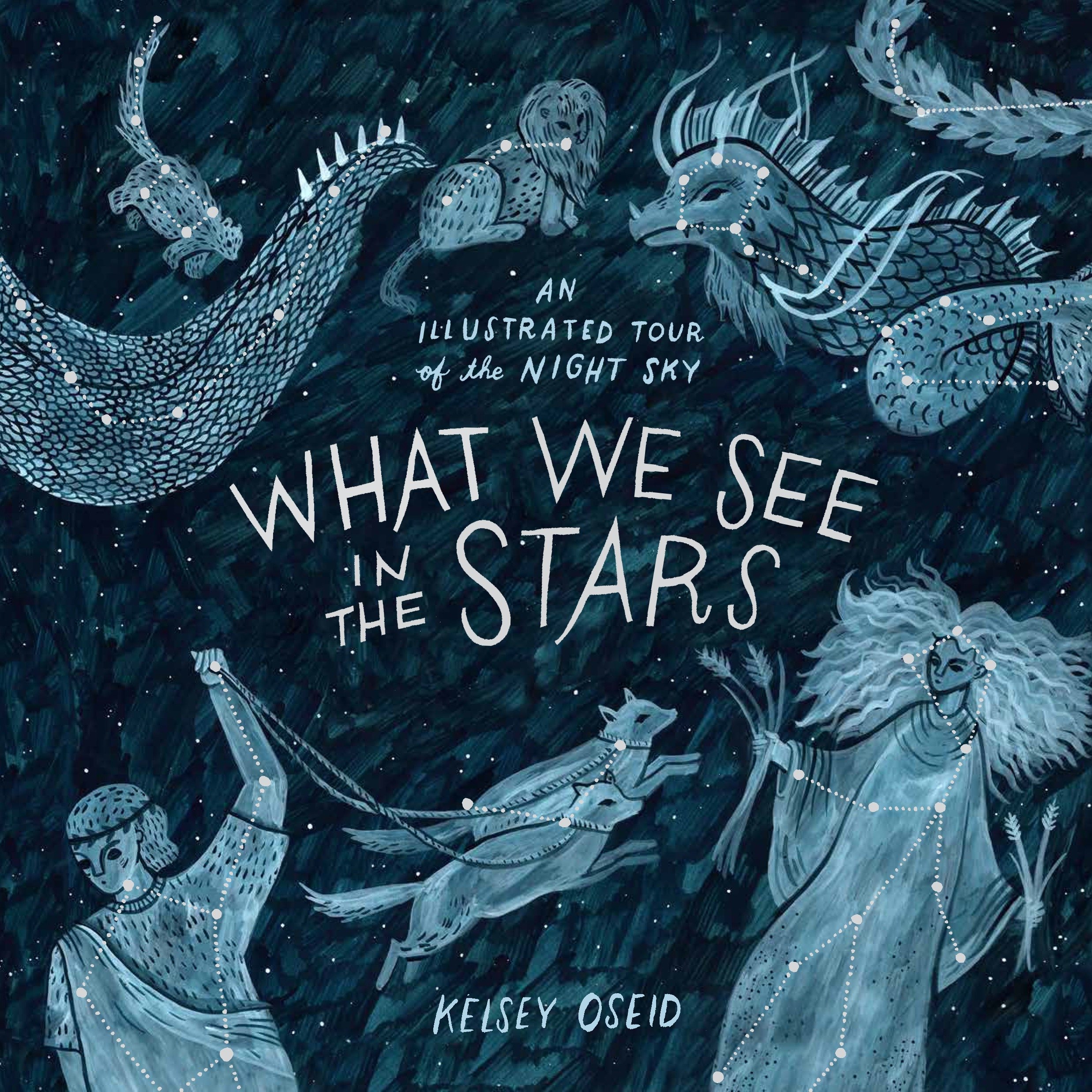What We See in the Stars: An Illustrated Tour of the Night Sky
14.00 JOD
Please allow 2 – 5 weeks for delivery of this item
Add to Gift RegistryDescription
A richly illustrated guide to the myths, histories, and science of the celestial bodies of our solar system, with stories and information about constellations, planets, comets, the northern lights, and more. Combining art, mythology, and science, What We See in the Stars gives readers a tour of the night sky through more than 100 magical pieces of original art, all accompanied by text that weaves related legends and lore with scientific facts. This beautifully packaged book covers the night sky’s most brilliant features–such as the constellations, the moon, the bright stars, and the visible planets–as well as less familiar celestial phenomena like the outer planets, nebulae, and deep space. Adults seeking to recapture the magic of youthful stargazing, younger readers interested in learning about natural history and outer space, and those who appreciate beautiful, hand-painted art will all delight in this charming book.
Additional information
| Weight | 3.26 kg |
|---|---|
| Dimensions | 1.88 × 2.83 × 2.83 cm |
| PubliCanadation City/Country | USA |
| Format | |
| language1 | |
| Pages | 160 |
| Publisher | |
| Year Published | 2017-9-26 |
| Imprint | |
| ISBN 10 | 0399579532 |
| About The Author | KELSEY OSEID is an illustrator, painter, artist, and amateur naturalist who has illustrated a variety of children's books and runs an online shop where she sells prints and original pieces of her nature-themed work. Her work has been featured on Design*Sponge, Oh So Beautiful Paper, Everglow Handmade, and in magazines like Organic Life, Anthology, and Good Housekeeping. |
"Kelsey Oseid renders the history, science, and myths of our solar system in stunning hand-painted art."—BuzzFeed"What We See in the Stars explains the human connection we have to the cosmos and the scientific discoveries made by people from around the world over several centuries. Beautifully illustrated, its inky pages take you on a journey to swim alongside the stars and celestial bodies throughout our galaxy. Kelsey Oseid makes you aware of your own unique place in spacetime and artfully shows why you should keep looking up." —Ariel Waldman, author of What’s It Like in Space? “This book is a beautiful way to learn about the science and history of the night sky. Kelsey Oseid’s beautiful paintings seem to be speckled with starlight and truly bring to life facts about astronomy, astrology, and mythology, from the mechanics of meteor showers to the tools used to map and name ancient constellations. What We See in the Stars is an amazing resource for anyone who ever looks up at the sky in wonderment.” —Rachel Ignotofsky, author of Women in Science |
|
| Table Of Content | CONTENTS THE CONSTELLATIONS Bright Stars 17 Precession & Shifting Pole Stars 18 The Ecliptic 20 Ptolemy’s Constellations 22 The Modern Constellations 72 Tools, Art & Technology 74 Animals & Mythical Creatures 78 Other Modern Constellations 84THE MILKY WAY THE MOON The Phases of the Moon 94Disk Sizes 98 Tidal Locking 99 More Moon Phenomena 100 Lunar Maria 102 Full Moon Names 104 THE SUNSunlight is Starlight 108Lunar Eclipses 110Solar Eclipses 111The Aurorae 112THE PLANETS Wandering Stars 116Mercury 119 Venus 121 Earth 123Mars 125Jupiter 127Saturn 129 Uranus 131 Neptune 133 Outer Objects 134 ASTEROIDS, COMETS & METEORS Comets 138 Meteors 140 Asteroids 144DEEP SPACE Messages for the Stars 148 Voyager Interstellar Mission 150Deep Space 152 Nebulae 153 Is There Anyone Out There? 154 |
| Excerpt From Book | INTRODUCTION For most of human history, our understanding of the cosmos was based not on scientific evidence, but on our direct observations of the night sky as we gazed up at its sparkling, dark expanse. We once imagined the sky to be something like a hollow, spherical shell surrounding the Earth, and stars as bright points on that shell. When we began to notice that some of those bright points took different paths across the sky than the rest, we altered our explanation: the Earth was encased not by one sphere, but by many perfectly transparent crystal spheres nested inside one another and spinning in different directions. Onto these, we mapped constellations, the sun, and the moon. Our old theories about how the universe worked were flawed, but stargazing was still key to some of humanity’s most important achievements. Calendars based on the movement of the sun, moon, and stars were important to the development of early agriculture. Navigation based on the positions of the constellations helped explorers sail the globe. The importance of the stars in our history is undeniable. With so many of us spending a majority of our time indoors and living in light-polluted cities, our stargazing is often limited to occasionally noticing the moon on a particularly luminous night. Even the Milky Way—our own home galaxy that appears as a soft stream of light stretching across the sky—is impossible to see when drowned out by the artificial light of our modern world. We can forget the magic of the night sky. To take a moment and gaze up is to connect to an ancient human experience, and can be a great source of wonder and awe. This book is a tour of the night sky, centered on the old names and stories still in use by astronomers today. It will cover the most brilliant features of our solar system: the constellations, the moon, the bright stars, and the visible planets. And it will delve into less familiar celestial phenomena too, like the outer planets and deep space. Through it all, we’ll explore some of the ancient mythology behind our night sky, as well as the basic science behind what we see—and don’t see—in the stars. |
Only logged in customers who have purchased this product may leave a review.






Reviews
There are no reviews yet.